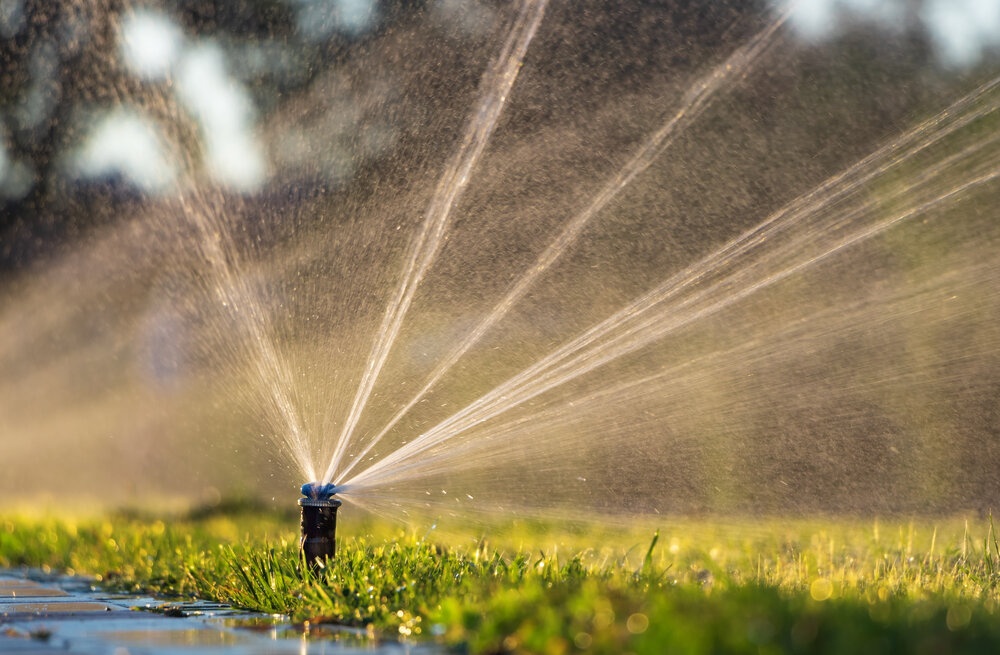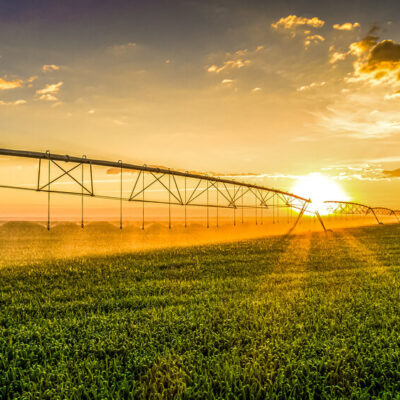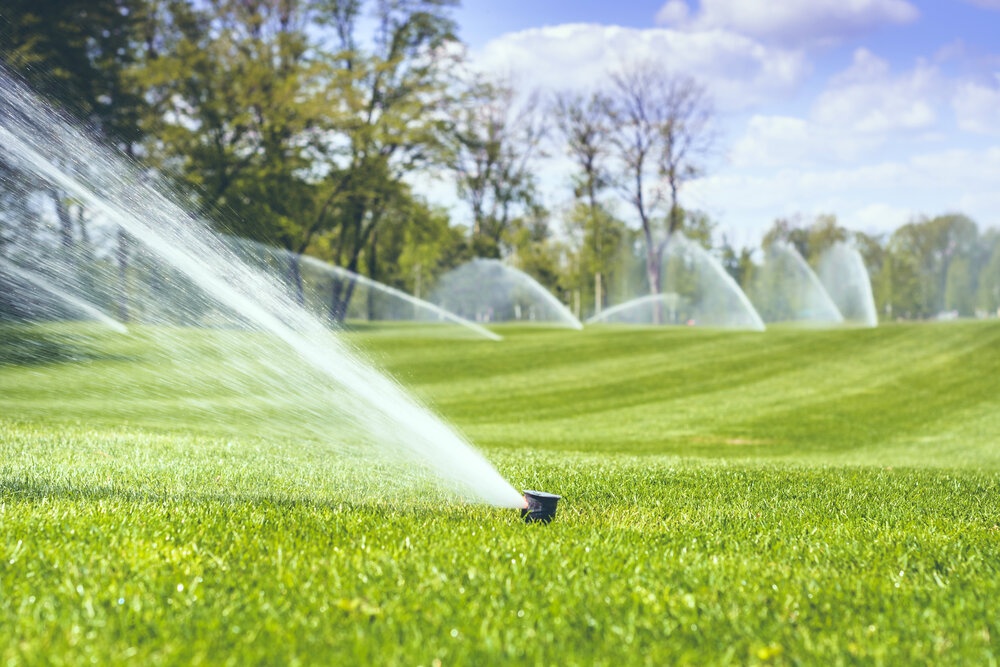An irrigation system is the best and most efficient way of supplying the right amount of water to home garden plants and lawns, larger landscaped areas, fields of crops, and golf courses.
The costs will vary depending on a range of factors, such as the size of the area to be irrigated, the type of irrigation system installed, the complexity of the system, and the labour cost for installation.
In this article, we will take a brief look at each of the scenarios in turn, discussing the types of irrigation systems available and their potential costs. Let’s begin with the home garden.
A Typical Home Garden Irrigation System
A properly designed and installed irrigation system for any home garden will ensure that there is a balanced flow of water delivered where necessary to compensate for those long hot summer days, prolonged periods when there is little or no rainfall and times when there are heavy downpours.
Smart, automated irrigation can deal with all of these factors, and if you're still watering manually, can save you money by reducing your water bills too. Here is a table, courtesy of the Checktrade website, showing some “ballpark” cost figures.
| System Type | Covering | Low to High-Cost Range | Average Cost |
| Sprinkler | Per Zone | £700 to £1,100 | £900 |
| Drip | Per Zone | £250 to £315 | £282.50 |
| Installation Labour | Per Zone | £480 to £720 | £600 |
All gardens are, of course, different, but the table above gives you a rough guide and takes into consideration all of the necessary components, such as drippers or sprinklers, valves, pipes, and the necessary fittings.
Which magazine published an article entitled the “Best Garden Irrigation System,” which makes interesting reading.
For more sophisticated systems, you’ll need to build in things like:
- Rain and moisture sensors – prices range from around £20 to £135 each.
- Programmable smart controllers/timers - prices range from around £45 to £415 each
- Solenoid valves from – process from around £11 to £120 each
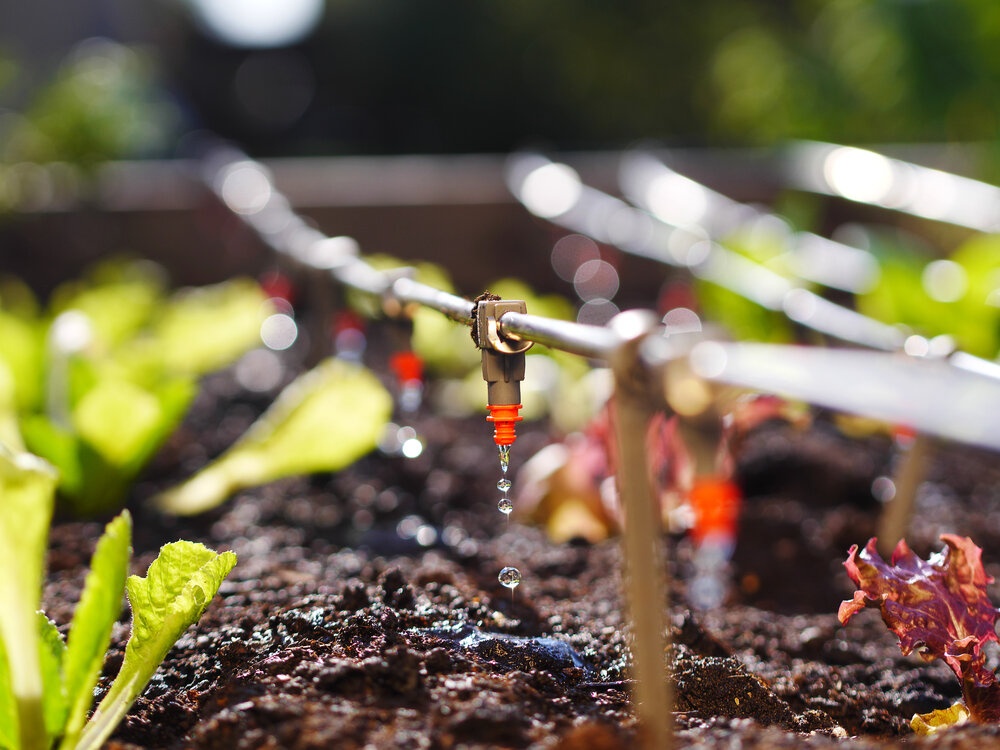
Irrigation Systems for Large Landscaped Areas
The principles of irrigation remain the same, whatever the piece or type of land under discussion. It's all about getting the right amount of water to the crops, grass, flowers, shrubs and trees, taking care not to overwater them all the while minimising water wastage.
A large, landscaped area still has the same basic watering needs as a small garden. However, the plant and feature mix is likely to be greater, as, of course, are the distances involved. Whereas small gardens tend to centre around lawned areas, small hedges, flower borders and the odd vegetable patch, large landscaped areas are mostly laid to grass, with shrubs and trees interspersed throughout, and maybe some flower beds and rockery areas too.
If you want to get into the detail of irrigating large, landscaped areas yourself, there are a couple of handy sources of information. They are the Rain Bird Landscape Irrigation Design Manual and a YouTube video by Yard Coach called "Designing Landscape Irrigation.”
As we've already said, the basics of irrigation are the same, no matter what the application, but size and zoning become much more significant with larger landscapes area. Different soil types, drainage, and the types of fauna, have to be carefully considered, and the irrigation system needed will probably incorporate several zones, each with its own requirements.
The landscape irrigation system example in the aforementioned Yard Coach video incorporates a five-valve system, with three of the valves dedicated to lawned areas, with each one colour coded to indicate how many gallons per minute a particular zone requires. The other two valves are purposed to the planter beds.
When it comes to more complex designs, drip, sprinkler, and soaker pipes are all up for grabs.
You can use the same sort of costs illustrated in the table above. The larger the area, the more pipeage, zones, valves etc., you're going to need, so you can simply multiply the figures out to give a guide cost. But remember, it is just a guide. If you decide to include advanced irrigation system features like remote control and weather sensors, costs are likely to range from £5,000 to £20,000 or more, depending on the size and complexity of the system.
If you feel the task is a little too demanding (design and or installation), don't be afraid to call in the professionals.
Irrigation Systems for Agricultural Crops
When talking about agricultural crops, it is very often the cost that dictates which type of system will be used. In poorer third-world countries, modern, sophisticated, state-of-the-art equipment is simply far too expensive.
In these situations, farmers revert to the old, time-honoured methods such as flood, furrow, and surge irrigation. Most of the cost is borne by the manual labour necessary to build terracing and trenches or canals. Some basic equipment such as control gates, valves and flow meters may be more affordable and, when employed, can considerably increase surface irrigation efficiency and reduce water wastage.
Irrigation systems for farms in countries in the more developed world can turn to sprinkler-type irrigation, but they probably require a number of pumps to deal with low water pressure and improve flow rate, particularly in challenging terrain.
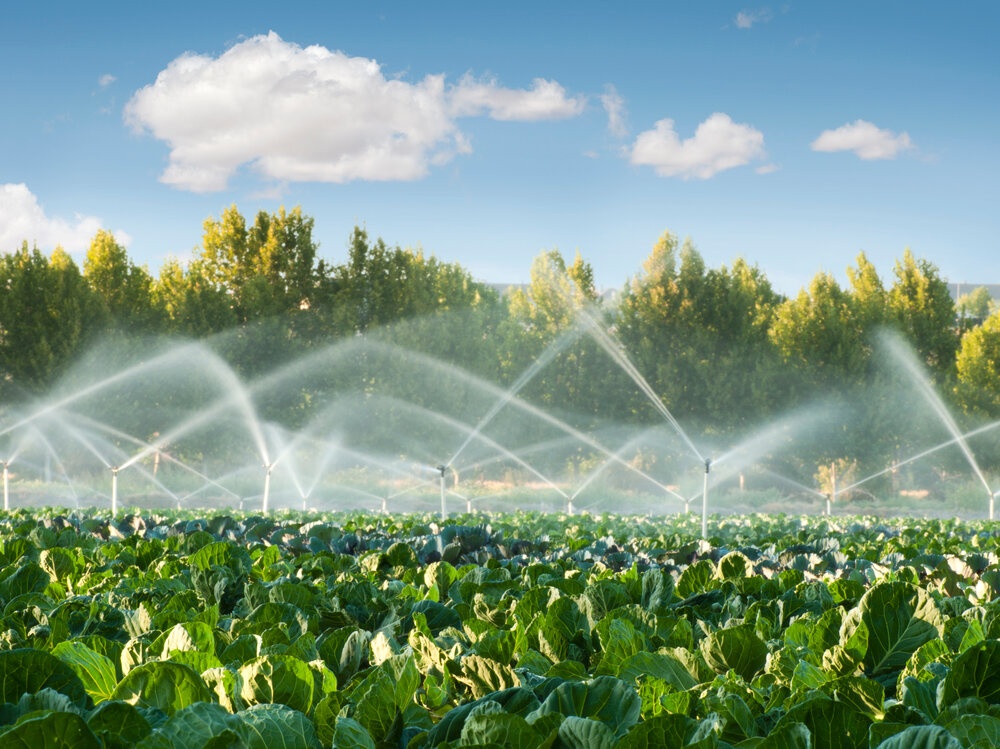
According to Checkatrade, the cost could be in the region of £100 per hectare. This is for stationary systems. Some farmers in countries where agriculture and farming has more wealth behind it, turn to methods such as big gun, travelling big gun, and centre-pivot irrigation systems.
One of the leading Big Gun manufacturers in the world is Nelson. Their Big Gun range goes from the 75 Series Full Circle Only with a 23 to 43M radius costs around $655 each, while their Nelson 200 Series Full Circle Only, has a 48 to 95M radius and costs around £2,225 per gun.
The number of guns required depends on things like the size of the irrigation area and whether it is used on traveller, on a fixed, solid set system, or as a centre pivot end gun.
Irrigation water is crucial for agricultural production and plays a key role in food security. 20% of the world's cultivated land employs an irrigation system and contributes up to 40% of food requirements worldwide. The fact of the matter is that irrigated agriculture is around 200% more productive than rain-fed agriculture.
Some good news is that the World Bank supports those countries that implement sustainable intensification of their agriculture through investments in their irrigation infrastructures, together with key reforms which contribute to achieving sustainable development goals.
Irrigation Systems for Golf Courses
Irrigation systems for golf courses in the UK can run anywhere from £500,000 to £1.5 million and more. According to one USA golf course irrigation specialist, Vanden Bussche, it can cost from $750,000 (£607,500) to more than $3 million (£2.43 million), and in some instances, the cost can be much as $5 million (£4.04 million).
The costs being potentially astronomical, it is vitally important to carefully pre-evaluate a course’s water requirements. You need to take into account the total area that requires irrigation, the species of turf throughout, and the soil conditions.
Soil types and the various microclimates play a part in determining the water requirements in terms of the deep, infrequent cycles needed to replace water in the root zone. But the irrigation of different areas will also be impacted by things such as hill slopes, exposure to the sun, and available shade, inn determining the maximum turf water requirement.
Efficient golf course irrigation systems are those that provide appropriate volumes of water regardless of rainfall. The experts at Vanden Bussche have calculated that an average 18-hole golf course comprises approximately 35 to 40 acres of mown fairway, around 6 acres of greens and tees, that require about 1,000 gallons of water to be delivered per minute.
Today's modern irrigation systems and the software that is available are capable of doing all sorts of things in order to optimise performance. They can work out the most efficient path run, check the hydraulics of the whole system to consider where pressure loss is greatest, and calculate the most efficient way of delivering the right amount of water.
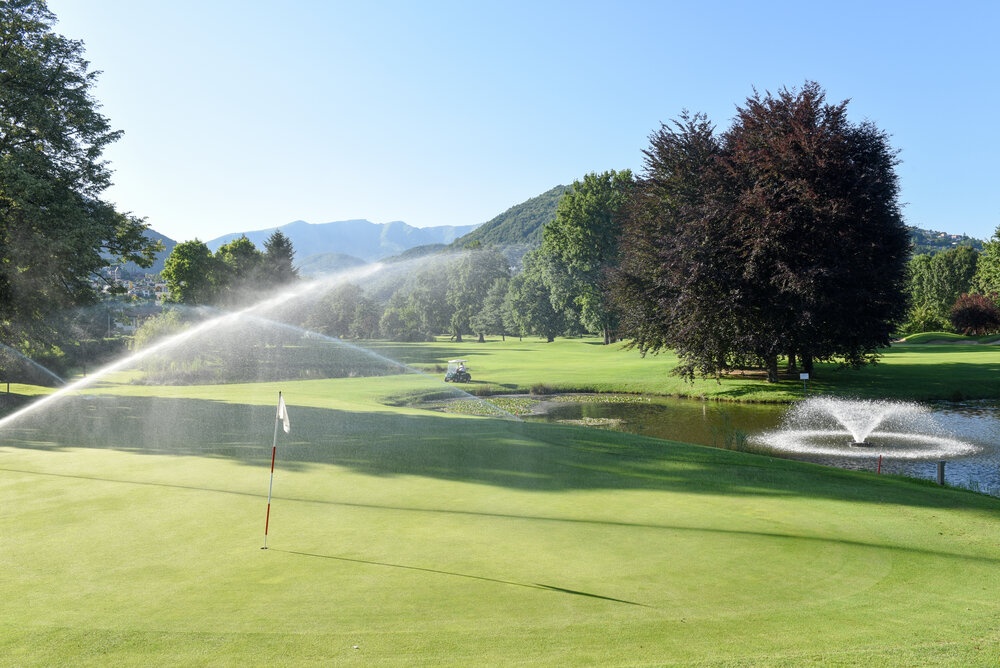
Some golf courses that have appropriately sized budgets employ irrigation engineers. But whether you use a contracted engineer or you employ a dedicated member of staff to cover this area of responsibility, there is a complex set of calculations that have to be completed to ensure optimum efficiency.
The majority of modern golf course irrigation systems use variable speed pumps, which can detect if there is any loss of pressure any loss of pressure. They also have so-called "jockey or booster pumps" whose job it is to kick in when necessary to increase the water pressure to the required level in low-pressure spots.
As a participating sport, golf is one of the most popular forms of sport here in the UK. Looking at Europe as a whole, England has the highest account of registered golf clubs and courses by a long way. The total count (according to figures published by the statistical.com website) showed that in 2017 there were 1,872 courses in England. The country with the next highest account was Germany, but that only had 731. On top of those in England, Scotland had 560 courses, Ireland 405, and Wales 145.
With golf course irrigation systems being as potentially expensive as they are, many clubs are now using financing to fund the cost of installing or renovating their irrigation systems.
All of the components, including control lines, valves, distribution systems, pump stations, software, sprinkler heads, and even water sources, can be funded via a finance lease or hire purchase agreement. Such finance arrangements can be spread over five, seven, or up to 10 years to suit a particular club's cash flow requirements.
One consideration to make note of for clubs going down the financing rate is that the VAT payments can be spread over the same period as the finance agreement. It means that a club doesn't have to fork out the full 20% VAT upfront, which can be important for many clubs as much of their VAT expenditure cannot be reclaimed.
Another thing worth considering is that as efficient irrigation systems are seen as being eco-friendly, many fund providers now categorise them as eco-friendly investments and offer more favourable terms.
Closing Thoughts
As the impact of climate change brings about more uncertainty in terms of future water supplies, water management techniques must respond with greater flexibility in order to deal with the changes in water demand and supply. Two important factors that can be bought to bear and that can help significantly are the use of IT, AI, and remote sensing.
Sources
https://urbanfarmstore.com/complete-guide-to-farm-irrigation-systems/
https://www.golfcourseindustry.com/article/golf-irrigation-costs/
